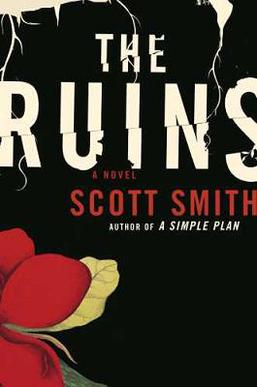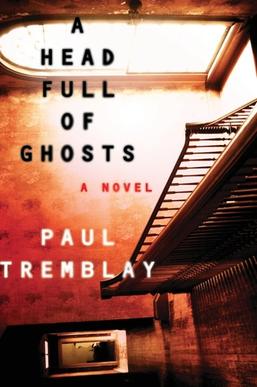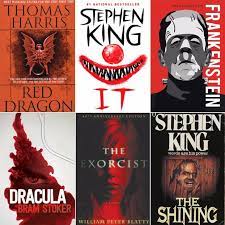Roughly a month ago, I came across the NPR Reader’s Poll list of 100 Best Horror Books and Stories and was surprised at just how few I had actually read. Have I really been neglecting horror literature over the years in favor of Stephen King novel after Stephen King novel? I felt like this was something I really needed to correct, so I set out on a journey to read a boatload of horror novels. But how to choose which ones?
I thought the NPR list looked like a solid list to start with but seemed to be missing many of the books I had heard good things about over the years, so I poked around a little more and came across the Reedsy Discovery 100 Best (And Scariest) Horror Books of All Time which seemed like a nice complementary list that covered a sufficient amount of contemporary horror fiction. The problem is that both the Reedsy and NPR lists were light on pre-00’s horror fiction. Fortunately, not long after I discovered that Stephen Graham Jones and Kim Newman had compiled the book Horror: The 100 Best Books as well as it’s belated follow-up Another 100. Between these two books, they really seemed to cover that more classic horror ground NPR and Reedsy were a little skimpy on.
So after merging duplicates across the lists, I came up with a grand total of 340 tomes of horror lit that I decided I’d tackle. The next thing I would do is separate out the books I had already read. Yes, I could’ve done the PURE thing and started all over from scratch, but we only have so many hours on the big green and blue ball called Earth and I wanted to get straight to brass tacks. I determined I had already read 44 of them leaving me with 296 to go. It’s going to be a big hill to climb but hopefully I will have had a more enriched horror education by the end of it.
I’m actually a little over a month into this journey from the point at which I initially conceived it, so the first couple of posts will be playing catch up after which I’ll probably go to bi-weekly or monthly updates. Without further ado, here’s the first batch:

1. The Ruins (Scott Smith, 2006)
List: NPR
So I had seen the movie based on this book of a group of youthful, hard-partying tourists who get trapped on a large mound covered in colorfully flowered but deadly vines so I generally knew what to expect. Overall it was a pretty decent book but I do feel conflicted about it. On one hand, it is paced really well with an interesting focus on the survival aspects of their situation the movie glossed over while also delivering some truly gruesome sequences. On the other hand, the main characters were generally pretty damned unlikable so I didn’t care about them at all. But maybe that was the point? Taken as a cautionary tale and not a story to sympathize with, I think works pretty well.

2. A Head Full of Ghosts (Paul Tremblay, 2015)
List: NPR & Reedsy
This one I really liked. It was pretty hard to put it down actually. On its surface, it’s a basic possession story about a 14-year-old girl exhibiting strange behavior whose family is suffering financially and stoops to having a reality show built around her predicament. It’s told from at least three different narrators at different points in time that creates an uneasy sense of what is or isn’t real. Very impressive book that keeps delivering even after you think it’s over.

3. Coraline (Neil Gaiman, 2002)
List: NPR & Reedsy
This was a quick read given it was target to the YA crowd, but Neil Gaiman is a damned good writer and creates a delightful and genuinely creepy world seen through the eyes of a curious girl who gets more than she bargained for when she goes through a mysterious door in the back of her flat. I had seen the movie already and the film is actually slavishly faithful to the book for the most part. Coraline would make for a great introduction to horror for kids (much better than any Goosebumps book I’ve read).

Horrorstör (Grady Hendrix, 2014)
List: Reedsy
The premise here is basically a cynical comedic take on haunted retail. It follows a group of employees of Orsk, an Ikea knock-off, as they stay overnight in the store to figure out what’s been causing some weird stuff to show up in the Showroom floor lately. The book does a solid job of starting as a retail comedy not unlike the TV series Superstore while slowly morphing into a genuinely creepy and strangely esoteric haunted house-style narrative. It’s very briskly paced, especially in the second half and is generally a lot of fun to read. Also an additional shout out to the graphic design of the book, tailored to look like a furniture catalog that slow starts to reflect the situation the characters find themselves in.

The Jewel of the Seven Stars (Bram Stoker, 1903)
List: Jones’ & Newman’s 100
Despite the popularity of the Universal monster The Mummy, I haven’t really come across many horror novels based on Egyptology, so I was cautiously optimistic about this one despite me being unimpressed with Stoker’s Dracula. Unfortunately, Stoker, like Lovecraft, is better with ideas than with execution. While the book retains some interest in the first half with the mystery of what’s ailing Professor Trelawney and why he left such oddly specific instructions, pretty much all suspense and mystery is dashed to the rocks as the second half gets increasingly more and more bogged down with stifling and endless dry exposition. The climax in the finale chapter isn’t bad but feels like too little too late.

